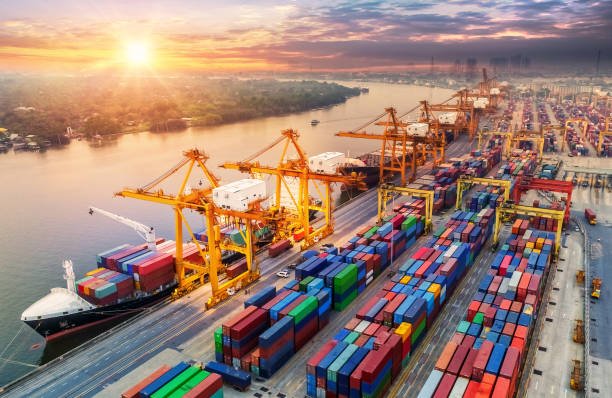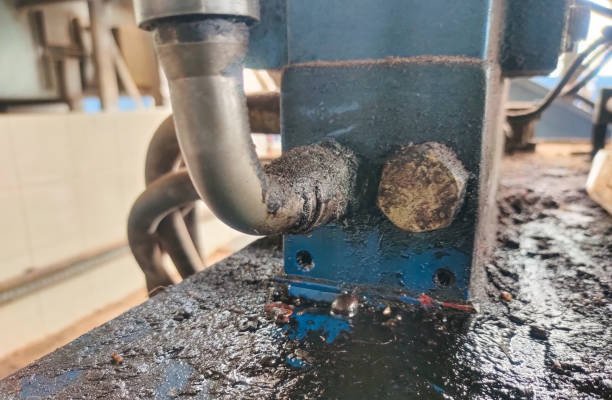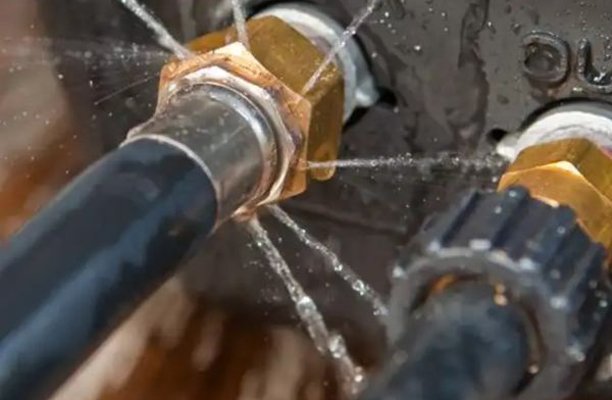Introduction
The ongoing U.S.-China trade tensions have introduced a wave of economic uncertainty, with tariffs playing a pivotal role in reshaping global supply chains. Among the sectors hit hardest are industrial and manufacturing domains—particularly hydraulic equipment buyers. As the U.S. continues to impose tariffs on Chinese imports, businesses that rely on hydraulic components such as cylinders, pumps, and valves are grappling with rising costs, unstable supply routes, and strategic confusion.
Understanding the implications of these tariffs is critical for Original Equipment Manufacturers (OEMs), maintenance teams, and procurement professionals who depend on cost-effective, timely, and high-quality hydraulic systems. This guide explores the current landscape, its impact on the hydraulic industry, and actionable strategies for long-term resilience and profitability.
What Are U.S. Tariffs on China?
Tariffs are taxes imposed on imported goods, typically designed to protect domestic industries or penalize unfair trade practices. In the context of the U.S.-China trade war, tariffs have been used as a political and economic tool since 2018. These levies target a wide range of goods imported from China, including raw materials, finished machinery, and components crucial to various industries.
Key milestones in tariff implementation include:
- 2018: Initiation of Section 301 tariffs on $50 billion worth of Chinese imports.
- 2019: Expansion to over $360 billion in Chinese goods, with multiple lists and rates introduced.
- 2020–2024: Periodic reviews, tariff exclusions, and geopolitical recalibrations under both Trump and Biden administrations.
Industrial categories such as electronics, steel, and machinery—including hydraulic equipment—have been squarely within the scope of these tariffs, often at rates of 10–25%.
Hydraulic Equipment in the Crosshairs
Hydraulic components are essential to many industrial applications, from construction and mining to agriculture and manufacturing. Unfortunately, these items are not exempt from U.S. tariffs on Chinese imports. Products like hydraulic pumps, actuators, valves, and control systems are typically classified under Harmonized Tariff Schedule (HTS) codes that have been targeted for duty increases.
Commonly affected HTS codes include:
- 8413.50 – Hydraulic fluid power pumps
- 8481.20 – Hydraulic valves and controls
- 8412.21 – Hydraulic cylinders
Major Chinese suppliers such as Liyuan, Jiaheng, and Yuken China have faced increased scrutiny and compliance requirements, making it more difficult and expensive for U.S. buyers to procure these parts directly. The result is an industry-wide recalibration, where procurement teams are forced to rethink sourcing strategies and budget allocations.
Direct Impact on Buyers
The imposition of tariffs on Chinese hydraulic components has had a significant and immediate financial impact on buyers in the United States. Original Equipment Manufacturers (OEMs), maintenance, repair, and operations (MRO) teams, and independent distributors have all reported noticeable increases in acquisition costs.
According to trade data from the U.S. International Trade Commission (USITC), the average cost of imported hydraulic pumps and cylinders from China rose by 15–25% between 2018 and 2023. These price hikes ripple through the entire supply chain, ultimately affecting project budgets, timelines, and profitability.
Besides increased costs, buyers have also had to deal with:
- Unpredictable delivery schedules due to customs backlogs and additional inspections.
- Contract renegotiations to account for fluctuating landed costs.
- Reduced flexibility in vendor selection, particularly for buyers dependent on niche or high-volume Chinese parts.
Indirect Impact on the Industry
Beyond direct cost implications, the hydraulic equipment sector is experiencing a shift in operational dynamics due to the tariffs. Many businesses are re-evaluating their entire procurement and supply chain models to mitigate risk and maintain competitiveness.
Key trends include:
- Sourcing diversification: Companies are seeking out alternative suppliers in countries like India, Vietnam, and Mexico to reduce dependence on China.
- Supplier consolidation: Some organizations are consolidating purchases to fewer, larger vendors that can offer tariff-friendly logistics and support.
- Changes in contract structures: Buyers are including “tariff-adjustable pricing” clauses in contracts, allowing for flexibility if duties change.
These trends indicate a broader industry shift toward strategic resilience rather than short-term cost savings alone.
Navigating Price Increases
To cope with elevated costs, hydraulic buyers are adopting various tactics to shield their bottom line without compromising operational efficiency or quality. While some organizations are passing increased costs to end customers, others are choosing more strategic paths.
Effective approaches include:
- Strategic sourcing: Identifying suppliers in non-tariffed countries and developing long-term partnerships to stabilize pricing.
- Inventory planning: Bulk buying or forward purchasing when tariffs are known or forecasted to increase.
- Cost analysis and value engineering: Redesigning systems to use more standardized or locally available components.
By staying proactive, businesses can maintain a competitive edge—even in a volatile trade environment.
Supply Chain Diversification Strategy
To reduce dependency on Chinese imports, many hydraulic buyers are actively pursuing supply chain diversification. The goal is not just to avoid tariffs, but also to build a more resilient and adaptable sourcing network that can withstand geopolitical and economic shifts.
Countries gaining traction as alternatives include:
- India: Rapidly growing industrial base with competitive pricing, although quality control may vary by vendor.
- Vietnam: Strong in light manufacturing and assembly, with improving infrastructure and international trade agreements.
- Mexico: Proximity to the U.S., reduced logistics costs, and eligibility under USMCA trade agreement.
However, diversification isn’t without challenges. Buyers must carefully assess potential suppliers for:
- Production capacity and lead time reliability
- Adherence to international quality and safety standards
- Logistics and shipping infrastructure
Domestic vs. Overseas Production

The question of whether to onshore hydraulic component production is increasingly relevant in the face of persistent tariffs and growing calls for supply chain sovereignty. Domestic manufacturing offers clear benefits: faster lead times, reduced geopolitical risk, and potentially stronger intellectual property protection.
However, there are notable trade-offs:
- Higher labor and operational costs: U.S. manufacturing remains more expensive than Asian alternatives.
- Limited capacity: Some complex components still rely heavily on specialized overseas production capabilities.
Federal and state-level incentives, such as tax credits and grants for reshoring initiatives, may tip the scale for some companies. Strategic onshoring, particularly for mission-critical or high-margin components, is gaining popularity as a hybrid solution.
Legal and Compliance Considerations
One of the most overlooked aspects of managing tariff exposure is ensuring legal and customs compliance. Hydraulic components are often subject to interpretation in the Harmonized Tariff Schedule (HTS), and misclassification can lead to severe penalties or retroactive duties.
To stay compliant and potentially reduce tariff burdens, businesses should:
- Consult with customs brokers: These professionals can help correctly classify goods under HTS codes and determine eligibility for exclusions.
- Engage trade attorneys: For high-volume or high-value imports, legal counsel can assist with strategic tariff planning and appeals.
- Maintain thorough documentation: Bills of materials (BOMs), certificates of origin, and purchase orders should be organized and audit-ready at all times.
Accuracy in classification not only ensures regulatory compliance but may also uncover opportunities for duty reduction through product reclassification or country-of-origin adjustments.
How to Mitigate Risk
In an unpredictable trade environment, hydraulic buyers must take a proactive stance to mitigate risks associated with tariffs, supply disruptions, and price volatility. Building a resilient supply chain is not just a tactical move—it’s a long-term strategic imperative.
Key risk mitigation strategies include:
- Multi-vendor sourcing: Avoid over-reliance on any single supplier or country. Diversify both geographically and across company sizes.
- Demand forecasting and predictive analytics: Use historical and real-time data to anticipate pricing shifts, material shortages, or geopolitical events that may affect supply.
- Flexible contracts: Incorporate clauses that allow renegotiation or temporary pricing relief in case of sudden tariff changes.
Risk management should become part of procurement KPIs, encouraging decision-makers to balance cost with continuity and reliability.
Technology’s Role in Supply Chain Management
Digital transformation is empowering hydraulic buyers with the tools needed to manage complex global sourcing operations more effectively. Technology not only enhances visibility but also helps in rapid response and decision-making during tariff-related disruptions.
Top technologies reshaping hydraulic procurement include:
- ERP systems: Centralized platforms that integrate purchasing, inventory, compliance, and vendor management.
- AI & Machine Learning: Predictive tools for demand planning, lead time estimation, and supplier risk profiling.
- Blockchain: For secure, transparent tracking of parts across the supply chain—from manufacturer to end-user.
Investing in these technologies can provide real-time insights, streamline operations, and reduce manual errors that could result in tariff miscalculations or missed sourcing opportunities.
Negotiating with Suppliers Amid Tariff Uncertainty
Given the ongoing volatility surrounding U.S.-China tariffs, strategic negotiation with suppliers has become more important than ever. The goal is to establish partnerships where cost burdens are shared and flexibility is embedded in the agreement.
Effective negotiation strategies include:
- Transparent communication: Keep suppliers informed of tariff pressures and explore mutually beneficial solutions.
- Renegotiating payment terms: Ask for extended terms or bulk discounts to offset increased landed costs.
- Tariff-sharing models: Collaborate with suppliers on co-absorbing tariff increases instead of passing them on entirely.
Developing long-term, collaborative relationships with key suppliers can lead to more agile responses when tariffs shift or trade policies evolve.
Conclusion
The evolving landscape of U.S.-China tariffs presents both challenges and strategic opportunities for hydraulic equipment buyers. From inflated costs and sourcing disruptions to compliance hurdles and supplier negotiations, the ripple effects are far-reaching. However, businesses that adopt a forward-looking, data-driven, and diversified sourcing strategy are better equipped to weather these disruptions.
By investing in supply chain resilience, exploring alternative markets, leveraging technological solutions, and remaining vigilant about policy shifts, buyers can turn a reactive situation into a strategic advantage. The key lies in proactive engagement, continuous learning, and robust planning to stay competitive in a globalized industrial economy.
FAQs
1. What hydraulic products are most affected by U.S. tariffs on China?
Products such as hydraulic pumps, valves, cylinders, and power units are heavily impacted. These components often fall under HTS codes targeted by Section 301 tariffs.
2. Can I avoid tariffs by sourcing from other countries?
Yes. Many companies are shifting to suppliers in Mexico, India, and Vietnam to avoid tariffs. However, quality control, lead times, and logistics should be carefully evaluated.
3. Are there any ways to get a refund on tariffs already paid?
Yes. Programs like duty drawback and Section 301 tariff refunds allow eligible businesses to recover duties paid under specific circumstances. Proper documentation is essential.
4. How can technology help in managing tariff-related risks?
ERP systems, AI-driven forecasting, and blockchain tools offer better visibility, predictive analytics, and traceability—empowering procurement teams to act faster and more strategically.
5. What should I consider before moving to U.S.-based suppliers?
Consider factors like cost, capacity, government incentives, and production complexity. Onshoring may not be feasible for all components, but it offers advantages in control and responsiveness.





